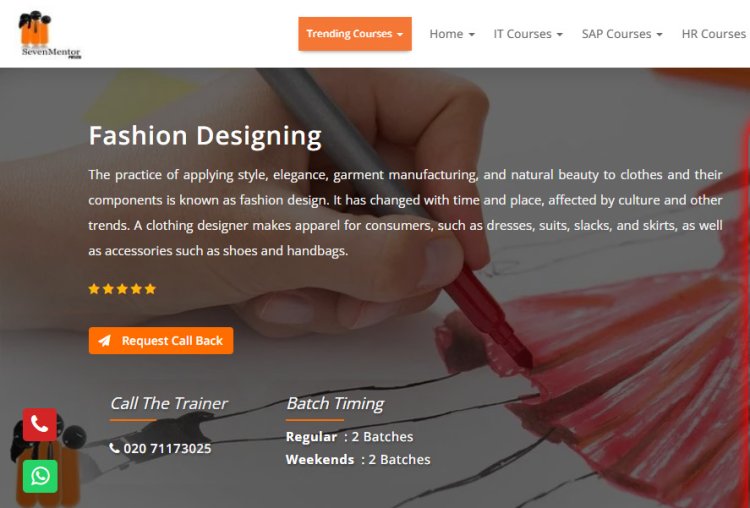What are the key elements of a successful fashion portfolio?
Share this Post to earn Money ( Upto ₹100 per 1000 Views )

Creating a successful fashion portfolio is crucial for designers seeking to showcase their talents and secure opportunities in the competitive fashion industry. A well-curated portfolio not only highlights one's skills but also communicates a unique creative vision. Here are the key elements that contribute to an outstanding fashion portfolio:
1. Introduction and Biography: Begin with a succinct introduction and biography. This section should provide a brief overview of who you are, your background, education, and key achievements. It sets the tone for the portfolio and gives context to your work. Include a professional photograph and contact information to create a personal connection with the viewer. Visit - Fashion Designing Classes in Pune
2. Concept and Inspiration: Showcase the inspiration behind your designs. This can include mood boards, sketches, and written explanations of your creative process. This section helps the viewer understand your sources of inspiration, whether they are cultural, historical, or personal, and how these elements influence your work.
3. Technical Skills and Expertise: Demonstrate your technical proficiency. Include detailed images of your best work, focusing on craftsmanship and technical skills such as pattern-making, draping, sewing, and fabric manipulation. Close-up shots of seams, finishes, and construction details are essential to highlight your abilities.
4. Design Diversity: Display a range of work to show versatility. Include different types of garments such as evening wear, casual wear, and experimental pieces. This variety illustrates your ability to adapt to different styles and markets, showcasing a broad skill set.
5. Cohesive Collections: Present full collections to exhibit your ability to create cohesive and thematic designs. A well-rounded collection demonstrates your understanding of how to develop a series of garments that tell a story or revolve around a central theme. Include sketches, fabric swatches, and final pieces to show the development process.
6. Editorial and Lookbook Photography: Incorporate professional photoshoots of your designs. High-quality editorial and lookbook images can bring your garments to life, showing how they look when worn and styled. These images should be visually appealing and capture the essence of your brand identity. Visit - Fashion Designing Course in Pune
7. Runway and Event Documentation: If you have participated in fashion shows or exhibitions, include photographs and videos from these events. This not only shows your work in a professional setting but also highlights your experience in the industry and your ability to present your work to a broader audience.
8. Sketches and Illustrations: Include hand-drawn sketches and digital illustrations. These demonstrate your design process and ability to visualize ideas before they are produced. It gives insight into your creative thinking and artistic skills.
9. Collaborations and Projects: Highlight any collaborations or special projects. Working with other designers, and brands, or on unique projects can show your ability to work in a team, adapt to different environments, and handle various creative challenges.
10. Client and Industry Testimonials: If available, include testimonials from clients, mentors, or industry professionals. Positive feedback from respected figures can add credibility to your work and give potential employers or clients confidence in your abilities.
11. Digital Presentation: Ensure your portfolio is digitally accessible. A professional website or a PDF version of your portfolio can reach a wider audience. Make sure the digital version is well-organized, easy to navigate, and compatible with various devices.
12. Personal Touch: Finally, add a personal touch to make your portfolio memorable. This could be a unique design layout, a distinctive logo, or a personal statement about your vision as a designer. It’s important that your portfolio reflects your personality and artistic identity.
A successful fashion portfolio is a balanced combination of creativity, technical skill, and personal branding. By thoughtfully integrating these key elements, designers can effectively showcase their talents, stand out in the fashion industry, and move closer to achieving their professional goals. Visit - Fashion Designing Training in Pune








